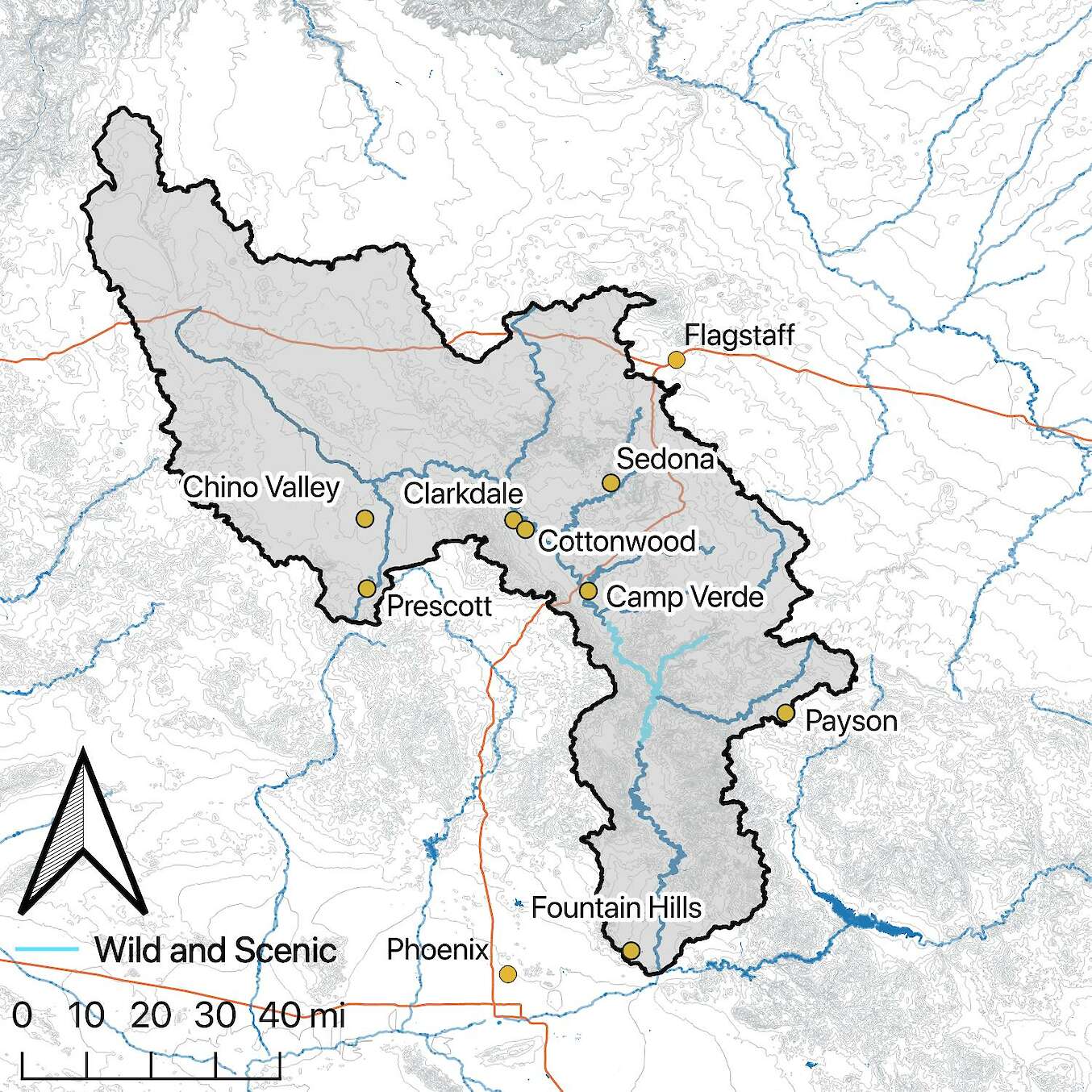
The Verde River is at the heart of our local communities; the river and its tributaries wind through our communities supporting ribbons of green. From its headwaters in Prescott, Granite Creek meanders across grasslands before meeting the Verde River outside of Paulden, marking the start of the perennial flow. As the river flows east and then south, it supports agriculture and recreation through Clarkdale, Cottonwood, and Camp Verde. Oak Creek passes through the red rocks of Sedona before meeting the Verde River. The river flows through Wild and Scenic reaches before becoming part of the water delivery systems for the Phoenix Metro Area.
The river, its tributaries, and connected aquifers, support a rich diversity of life including beavers, otters, and bald eagles. The Verde hosts nine species of native fish and hundreds of birds’ species. Large mammals include mountain lions, bears, deer, and elk. People have depended on the river since time immemorial and this continues today. Agriculture and recreation in the area rely on the water in the river for irrigation, kayaking, swimming, and fishing.
Drinking water across the region comes from aquifers connected to the river. Our communities continue to work to conserve these resources and find ways to enhance the sustainability and resilience of this water supply. The Verde River supplies water into the Phoenix Active Management area through the Salt River Projects water delivery system that supports millions of Arizonans. The Verde River, part of the Colorado River Basin, defines our local communities and is a critically important water supply within the Colorado River System.
The 2025 Watershed Report documents the status of the watershed today, which reflects past management, climate conditions, and geography of the watershed. Following the 2020 Watershed Report Card, watershed stakeholders identified and implemented specific actions to improve the resilience of the watershed. These include upland restoration, water quality monitoring, agricultural infrastructure, invasive plant removal and stormwater management. These actions improve the natural conditions in the watershed and increase water security for communities as well as improve economic conditions.
